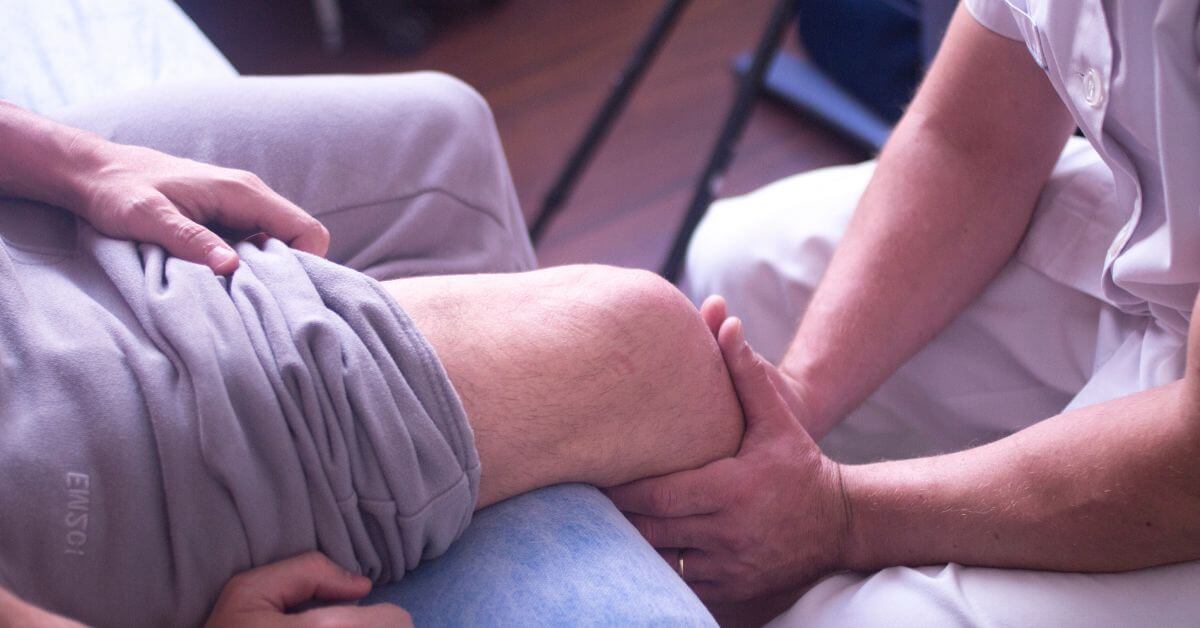This article includes affiliate links, which means I might receive a commission if you decide to buy something through them. It won’t cost you anything, but your support helps me keep creating helpful content like this. Thank you!
Introduction
Joint and muscle soreness can be a daily struggle, affecting mobility and comfort. Whether caused by physical activity, aging, or chronic conditions, pain can seriously impact one’s quality of life. Thankfully, natural remedies offer an effective alternative to conventional pain medications, promoting healing from within and minimizing side effects.
In this guide, we’ll dive into various natural pain relief options to help you soothe joint and muscle soreness, regain comfort, and improve overall well-being.

Understanding Joint and Muscle Pain
Joint and muscle pain affects millions globally. Here’s a look at the most prevalent causes:
| Cause | Description |
|---|---|
| Overuse & Strain | Intense physical activity or repetitive movements can lead to muscle fatigue and joint strain. |
| Age-Related Wear and Tear | With age, joints wear down, leading to conditions like osteoarthritis. |
| Inflammatory Conditions | Autoimmune diseases can trigger chronic inflammation, resulting in pain. |
| Lifestyle Factors | Slouching, lack of physical activity, and unhealthy eating habits can worsen discomfort. |
Benefits of Natural Pain Relief Solutions
Natural pain relief offers unique benefits over conventional methods, providing lasting results and supporting overall wellness.
| Benefit | Description |
|---|---|
| Reduced Dependence on Pharmaceuticals | Minimizes reliance on medications, reducing risks of side effects or dependency. |
| Addresses Root Causes | Natural remedies often target underlying inflammation rather than masking symptoms. |
| Supports Overall Wellness | Many natural remedies also offer immune support, better digestion, and mental clarity. |
Top Natural Pain Relief Solutions
1. Herbs for Pain Relief
Certain herbs have long been used in traditional medicine to manage pain due to their anti-inflammatory and analgesic properties.
| Herb | Active Compound | Pain Relief Benefit |
|---|---|---|
| Turmeric | Curcumin | Has potent anti-inflammatory effects, especially useful for arthritis. |
| Ginger | Gingerol | Reduces muscle pain and soreness post-exercise. |
| Boswellia | Boswellic acids | Inhibits inflammatory enzymes, easing arthritis and joint pain. |
| Willow Bark | Salicin | Contains a natural pain-relieving compound similar to aspirin. |
2. Essential Oils for Soreness
Essential oils provide localized pain relief and reduce inflammation when applied directly to sore muscles or joints. Here are some of the most powerful options:
| Essential Oil | Key Benefits | Suggested Usage |
|---|---|---|
| Peppermint | Cooling and numbing effect | Dilute with a carrier oil and massage onto the affected area for a cooling sensation. |
| Lavender | Reduces inflammation and relaxes muscles | Add a few drops to bath water or apply diluted to the skin. |
| Eucalyptus | Pain relief and respiratory support | Mix with a carrier oil for massage; may also aid respiratory function. |
| Rosemary | Improves circulation | Can help ease sore muscles when massaged into the skin with a carrier oil. |
Topical Application: Dilute a few drops of essential oil with a carrier oil (like coconut or almond oil) and massage it onto the sore area.
Warm Compress: After applying essential oils, use a warm compress to allow the oils to penetrate deeply into the tissues.
3. Anti-Inflammatory Foods
Diet plays a significant role in managing pain and inflammation. Here are some key anti-inflammatory foods to include in your meals:
| Food Category | Examples | Pain Relief Benefit |
|---|---|---|
| Omega-3 Fatty Acids | Salmon, flaxseed, chia seeds | Reduces inflammation, supports joint health, and relieves muscle tension. |
| Leafy Green Vegetables | Spinach, kale, collard greens | High in antioxidants that combat inflammation and support muscle recovery. |
| Berries | Blueberries, strawberries | Rich in antioxidants that help reduce oxidative stress on joints and muscles. |
| Nuts and Seeds | Almonds, walnuts | Packed with anti-inflammatory nutrients like omega-3s and magnesium. |
4. Hot and Cold Therapy
Heat and cold therapy are effective, natural methods for managing soreness. Here’s how each can help:
- Heat Therapy: Increases blood flow to the affected area, easing stiffness and promoting flexibility.
- Cold Therapy: Reduces swelling and numbs sharp pain, especially helpful after an injury or intense activity.
| Therapy Type | Best For | Instructions |
|---|---|---|
| Heat | Stiffness and tight muscles | Apply a warm compress or heating pad for 15-20 minutes to increase circulation. |
| Cold | Inflammation and swelling | Use an ice pack wrapped in a cloth for 10-15 minutes to reduce swelling. |
5. Physical Activity and Gentle Stretches
Regular, low-impact exercises help strengthen muscles and increase flexibility, reducing joint stress and pain. Here are some exercises to try:
- Walking: A low-impact exercise that boosts circulation and joint mobility.
- Yoga and Stretching: Helps lengthen muscles, improves flexibility, and reduces stiffness.
- Swimming: Provides cardiovascular benefits without putting strain on joints.
Focus on gentle, consistent movements, and stretch daily to prevent stiffness.
6. Daily Habits to Prevent Joint and Muscle Pain
Preventive measures can make a world of difference in managing chronic pain. Here are some effective daily habits:
| Habit | Benefit |
|---|---|
| Stay Hydrated | Keeps muscles and joints lubricated. |
| Follow a Balanced Diet | Reduces inflammation through nutrients. |
| Maintain Proper Posture | Prevents unnecessary stress on joints. |
| Incorporate Rest | Essential for muscle repair and recovery. |
Long-Term Pain Management Tips
- Posture Awareness: Maintaining good posture can relieve pressure on joints and reduce muscle strain.
- Weight Management: Carrying extra weight can stress joints, particularly the knees, back, and hips. A healthy diet and regular exercise can aid in achieving a manageable weight.
- Quality Sleep: Restful sleep is crucial for muscle recovery and joint health. Aim for 7-8 hours per night.
- Mindfulness and Meditation: Practicing mindfulness can help manage pain perception and reduce stress-related muscle tension.
- Regular Check-Ins with Healthcare Providers: If pain persists, working with healthcare providers can ensure you’re on the best path for long-term relief.
Recommended Products for Natural Pain Relief
| Product | Description | How It Helps |
|---|---|---|
| Turmeric Curcumin with Bioperine | A supplement that enhances turmeric’s absorption. | Reduces inflammation and alleviates joint pain. |
| Organic Ginger Root Capsules | Convenient capsules containing pure ginger extract. | Relieves muscle soreness and promotes relaxation. |
| Peppermint Essential Oil | A cooling essential oil with a refreshing scent. | Soothes muscle tension and provides pain relief. |
| Heating Pad for Pain Relief | An electric pad designed to provide soothing heat. | Relaxes muscles and alleviates stiffness and pain. |
| Cold Pack for Pain Relief | A versatile cold pack that can be applied to sore areas. | Reduces swelling and numbs pain after injuries. |
| Yoga Mat for Gentle Stretching | A non-slip mat ideal for yoga and stretching exercises. | Supports gentle stretching to relieve muscle tightness. |
Conclusion
Natural remedies for joint and muscle soreness provide an effective approach to managing pain without relying solely on pharmaceuticals. Herbs, essential oils, anti-inflammatory foods, and daily habits all work synergistically to target the underlying causes of pain, leading to sustainable relief. Embrace these natural solutions to experience improved comfort, mobility, and overall well-being.
FAQs
1. How often should I apply essential oils?
Apply diluted essential oils 1-2 times daily to sore areas.
2. Can I use turmeric and ginger together?
Yes, both can be combined for enhanced anti-inflammatory effects.
3. When should I use hot vs. cold therapy?
Use cold therapy after injuries and heat for chronic pain.
4. Are there side effects to natural herbs?
Most herbs are safe, but consult a healthcare provider if you’re on medications.
5. How long until I see results from natural remedies?
Results may take a few weeks of consistent use to become noticeable.


